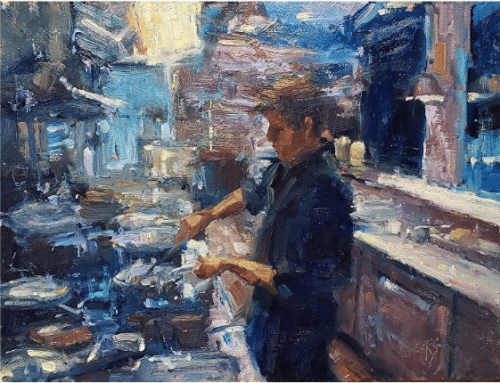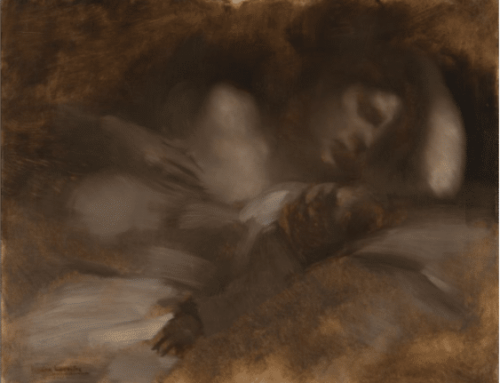As much as any landscape painter, poets of course can be deeply moved by the turning of the year from summer to fall.
Nineteenth-century American painter George Inness’s Early Autumn, Montclair (at the top of the page) masterfully invites us to revel in that breezy, sunlit warmth that accompanies the onset of autumn. The sunlight hitting the side of the tree is only the most obviously gorgeous part of it; he distributes warm tones throughout the work, in the colorful foliage and the grass, even the clouds. He’s achieved this uniform glow by glazing – coating the surface of the dry painting with a thin wash of a red-toned pigment such as raw or burnt sienna or iron oxide red.
Twentieth century German poet Rainer Maria Rilke evokes a similar sensation of early autumn in the first two stanzas of his poem Autumn Day. Poetry such as Rilke’s reminds us that more than anything else, the most moving art is concerned with giving meaningful form to feelings many of us share.

Auguste Rodin, The Kiss
Rilke came into his own as a poet after encountering the art of sculptor Auguste Rodin and painter Paul Cezanne while living in Paris as a young man. Both artists sought material form In Rodin, one finds delicate and ephemeral emotions given a purposefully rough and earthen solidity in marble alternately glass-smooth and seemingly unfinished. For his part, Cezanne said he wanted to make “something solid and lasting” of the airy lightness of Impressionism, and like Rodin’s alternately finished and naked marble, Cezanne’s dashed, angular color patches emphasize and include as part of the work’s meaning the effort of capturing emotions and impressions in art.

Paul Cezanne, Autumn Landscape (Paysage d’automne), c. 1884
Rilke titled the first collection of his breakthrough poems “The Book of Pictures” (1902), reflecting his own desire to give physical form to complex, indefinite sensations through the relationship between feelings and images in art and the words of poetry.

Rodin, from The Burghers of Callais, Greg Janee
It’s in volume one of “The Book of Pictures” that his poem “Autumn Day” first appeared.
Autumn Day
Lord, it is time. The summer was immense.
Lay, now, your shadows on the sundials,
And in the meadows let the winds run free.
Charge the last fruits to ripen, to be full;
Grant them two more sunny, southern days,
Urge them on to fulfillment and press
The final sweetness into the heavy wine.
Whoever has no house now will never build one.
Whoever is alone now will remain alone,
Will stay up late reading, and write long letters,
And drift restlessly among the tree-lined streets,
Wandering, while the dry leaves are blowing.
Rainer Maria Rilke
(trans. Christopher Volpe)

Autumn mood, by one of the most poetic and “autumnal” of the Tonalists, Bruce Crane.




